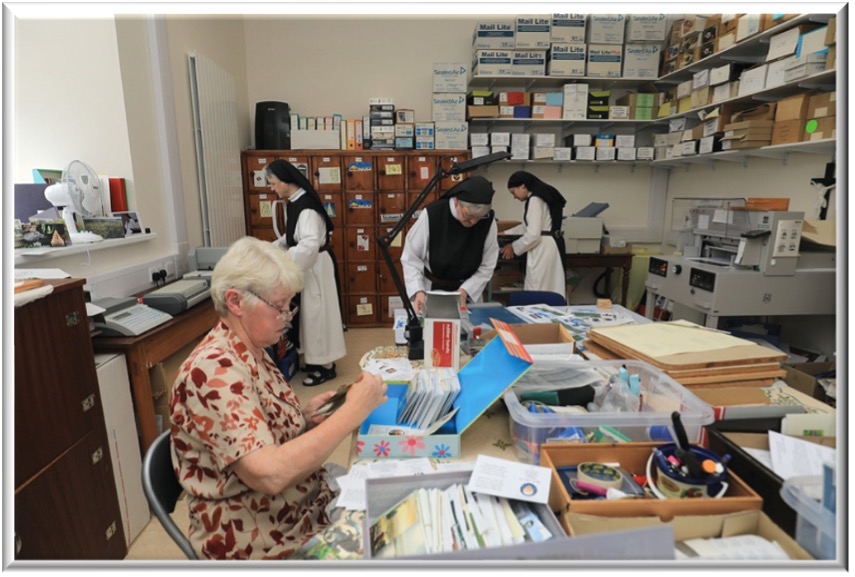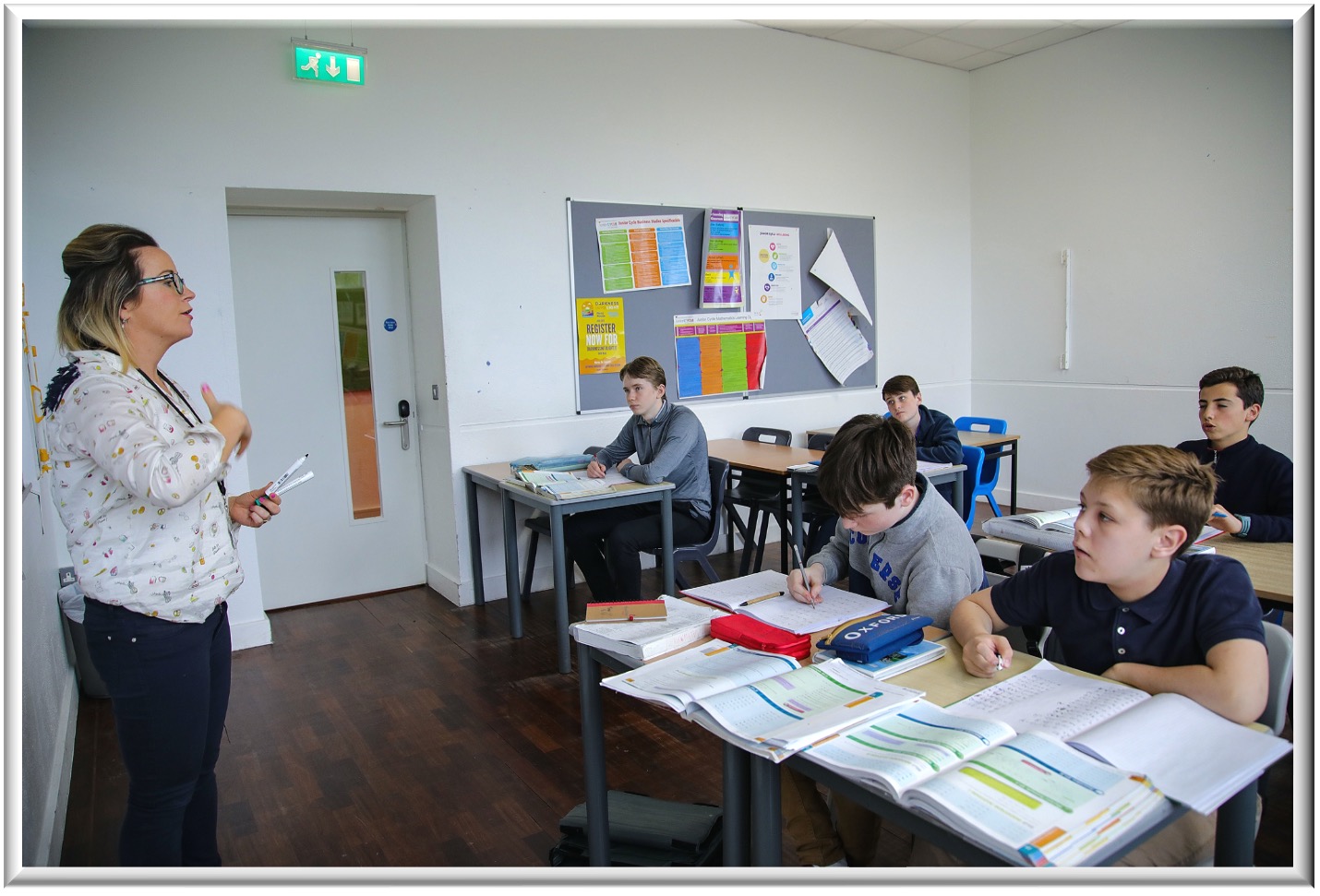by Saverio Mommo
What’s summertime like in an Abbey?
Summer can be defined as one if not the most awaited season of the year, the majority of people would probably describe it as the time when you have the greatest opportunity to rest and share moments of happiness with your loved ones.
Thus, today’s question is the following: does the idea of summer that the world has created find its equivalent in the reality of an abbey?
We find the answer to this question by taking a look at three different Irish abbeys. To get a clear idea of what happens in an abbey during the summer period it’s useful to observe the five images that, from my perspective, are most representative of this hot time of year.
Glencairn Abbey
Leafing through A Year in the Life – Glencairn Abbey you read:
Summer brings its gracious blessings of fecundity and growth. The woods at Glencairn are transformed by a carpet of garlic and bluebells that appear in the month of May, which announce nature’s return to the peak of its strength. Every tree, plant and shrub in field, wood and garden bloom with new life, freshness and vivid colour. Summer corresponds with Ordinary Time in the Church’s liturgical calendar. The colour of the priest’s vestments are green, aptly symbolising the hope and growth of this season. The monastery is busy with much outdoor work to be done, and the sisters take time to simply enjoy nature. The community welcomes many summer guests and pilgrims, sharing with them the fruit of our life of prayer, work, silence and simplicity.

Some of the work in the card room is done in silence, which gives an opportunity to practice mindfulness of God and personal prayer. The preparation of Christmas cards begins in August and we supply cards to a large customer base of individuals and wholesalers.

At the centre of all monastic life is work and prayer. Prayer is a moment of intimacy with God, in church or in solitude. Work is also their prayer, whether it is washing the windows from the deposits left after the nesting house martins, working on the farm, in the card department, making Eucharist bread or maintaining the monastery’s website.
By observing these images, it’s easy to understand that the term ‘summer’ at least in Glencairn Abbey, has a different meaning to the people who live here. What truly emerges from these pictures, as well as from the entire collection of images within the book, is that summer has a different definition here, but so does the word ‘work’. The way in which work is done during the summer months here is far from the kind of work that is completed on the outside. We can see that this work, even the most tiring, is carried out with patience and attention because each task is accompanied by the power of God and the will to give for others to achieve the unachievable.
What I have just described is only a small part of what this book is able to convey, so if you would like to expand your knowledge on how these sisters live their lives during the other seasons of the year, I highly recommend A Year in the Life – Glencairn Abbey for you!
Glenstal Abbey
Reading through Glenstal Abbey – Trough the Seasons we are introduced to the book with the entrance to the abbey:
“The word “PAX” and a cross are emblazoned about the entrance to Glenstal as they are at the entrance to every monastery. Meaning ‘peace’, it represents our wish for anyone who comes here but particularly for those who arrive as guests and pilgrims and who, in St Benedict’s words, ‘are never lacking in a monastery’. Between groups, day-trippers and resident guests, the community receives around 8,000 visitors each year, not to mention those who come to attend the services or to walk the grounds. In recent years, through the generosity of a benefactor, we have improved the facilities for visitors, enabling us to better fulfil the Rule’s instruction that ‘every guest should be received as if they were Christ’. None of this would be possible without the support and generosity of our staff. The housekeeping department ensures that both schoolboys and visitors enjoy a safe and secure environment. The receptionists see that visitors and callers receive a warm and efficient welcome while those in the bursar’s office ensure we have the resources to pay for it. Although recently leased, the farm plays an important role in our environment and the well-tended paddocks and grazing cattle provide a bucolic backdrop to all that goes on here.”

Deirdre O’Connell, Math Teacher at Glenstal Abbey school.

Fr Placid, 100, Ireland’s oldest monk, with Fr Maksymilian, 39, one of Europe’s youngest abbots.
When it comes to Glenstal Abbey, summer is not synonymous with relaxation, it is rather a period in which many things happen and in which everyone tries their best to grow and learn something more from life. Looking at these two pictures taken by photographer Valerie O’Sullivan, it is evident that unlike what you might think, Glenstal Abbey is a place where many young people spend their time. A quick look at the first image shows us that we can all understand how important it is to not only bring faith and peace into younger hearts but knowledge too. Much more emotional from my perspective is the second photo, in which the photographer succeeds in stopping time during a very crucial moment: in which the glance of two men with more than a generation between them meet. This picture emphasizes how peace and how faith can connect two completely different lives and make them one.
What’ve just picked are only two of the many outstanding pictures taken by Valerie O’Sullivan, so I really suggest you take a look at the others from the book Glenstal Abbey :Through The Seasons.
A Flavour of Kylemore Abbey
Finally, we’ve got some delicious food here’s a lovely summer recipe of a traditional lemon bakewell tart from Kylemore Abbey’s summer cookbook:

Lemon Bakewell Tart.
For the sweet pastry:
- 200 G CREAM FLOUR
- 90 GICING SUGAR
- 150 G MARGARINE
- 3 EGG YOLKS
For the lemon and almond topping mix:
- 110 G BUTTER
- 110 G CASTER SUGAR
- 2 EGGS
- 110 G GROUND ALMONDS
- FINELY GRATED ZEST OF 1 LEMON
- 50 G FLAKED ALMONDS
For the filling:
- 250 G KYLEMORE ABBEY LEMON CURD
Preheat the oven to 150°C
To prepare the pastry mix the flour and sugar together. Rub in the margarine. Slowly add in egg yolks one at a time. Combine to make a smooth pastry. Roll the pastry out on a floured worktop to about 1 cm thickness and line a greased 20 cm pie dish with the pastry. For the toppings mix cream the butter and sugar together until light and creamy. Beat the eggs and add to the mixture a little at a time. Fold in the almonds and lemon zest. Spread the lemon curd on the pastry lining your pie dish, leaving about 1 cm from the edge of the dish uncovered. Spread the lemon and almond topping mix evenly all over making sure it reaches the edge of the dish. Sprinkle with flaked almonds. Bake at 150°C for 35-40 minutes or until golden brown.
Chef’s Tip:
Double this pastry recipe and keep half in the freezer as it is a great base for all sorts of tarts and pastries, e.g. apple pie, mince pies. Replace lemon curd with raspberry jam and leave out the lemon rind from your topping mix to make a traditional bakewell tart. The delicious recipe I’ve just shown is taken from A Flavour of Kylemore Abbey and if you were passionate about cooking and wanted to know more about many other recipes, even about salty foods, then I wouldn’t think twice about buying this book.
The delicious recipe I’ve just shown you is taken from A Flavour of Kylemore Abbey and if you are passionate about cooking and want to know more about many other recipes or even savoury foods, then I wouldn’t think twice about buying this book.
These books offer a tiny glimpse into religious life in Ireland during the summer months. The work that is accomplished yearly by these spiritual people is particularly important as they do it through God.
All three of these books are available for purchase on our website here.

